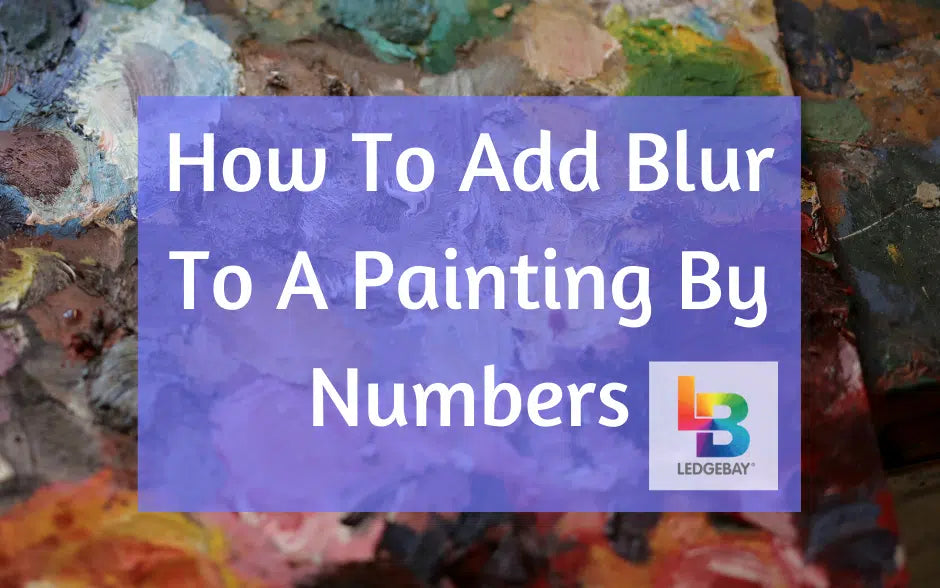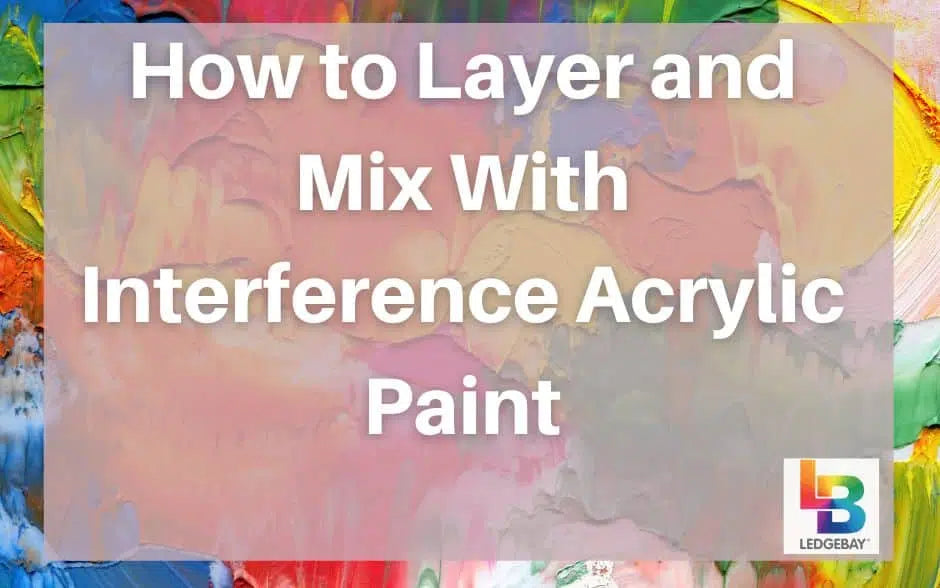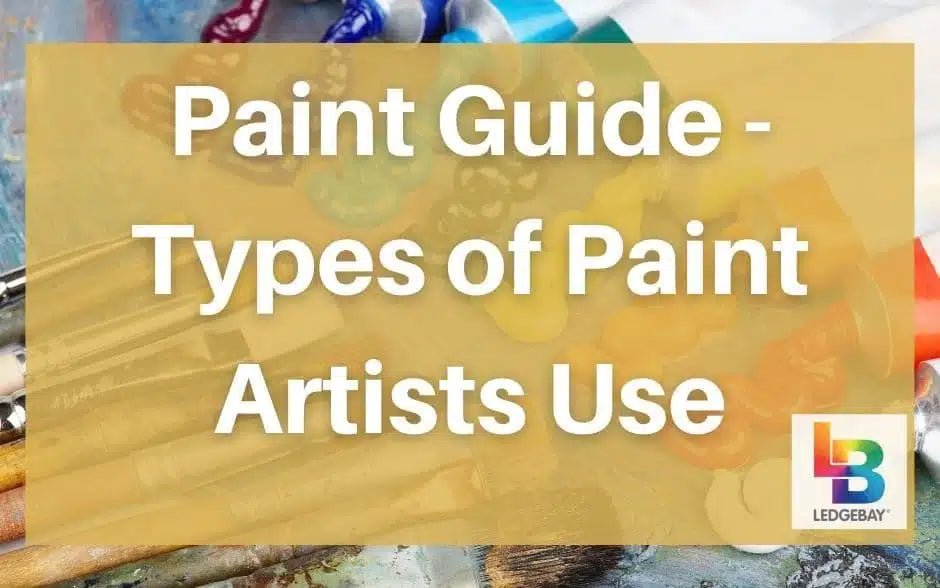The paint by numbers blur effect is a little, nifty technique that can turn an ordinary painting into a masterpiece. It's not a hard skill to grasp, especially if you've been painting by numbers for some time.
The best part? It will make your artwork look unique and original.
The thing with paint by numbers is that manufacturers usually create one design and print it on multiple canvases. Therefore, it's not uncommon to find thousands of paintings that look exactly like yours.
Luckily, you can make your artwork unique by adding a few effects , like using the blurry painting style. On this page you'll find a step-by-step guide for that.
First things first, it's a lot easier to employ the blurred painting technique when you're using oil paint. Acrylic is fairly easy while watercolor is extremely hard. For that reason, always choose oil or acrylic paint by numbers kits to achieve the best blurry effect painting.
[amazon box="B08BNJJDBX"]
Reasons for Adding Blur to Paint by Numbers
[amazon box="B07R3TP9DG"]
You can apply the paint by numbers blur technique for many reasons. For example, you may use it to create a soft focus painting where every image is out of focus. Phillip Barlow is a master of this type of painting.
Use this blurry painting style when you want to remove all sharp features and harsh lines. It's a unique and very interesting form of art.
Additionally, the paint by numbers blur effect may come in handy when you want to portray rapid movement.
By creating soft edges on an object, you make it look like it's in motion. Therefore, you create the illusion of movement. You'll love this little trick, especially if your paint by numbers design has only one object to paint.
The blurry effect in painting also helps you to control focus. Let's say you have this lovely paint by numbers for adults from Ledgebay and you want to draw your audience's attention to the sailing couple rather than the bridge and greenery.
You can do that by blurring the background. That includes the bridge, the woods and the boat with ducks. In doing so, the attention of your audience will strictly be on whatever's in focus; which in this case would be the couple.
All the above are valid Reasons for using the paint by numbers blur effect. However, the biggest one of them all is that you'll learn how to add blur to real paintings. This is a skill that every painter has to learn at some point because it helps artists to create focus, soft focus, impressions of motion, 3-D illusions and so much more.
So why not start with your paint by numbers project? Since the canvas is pre-designed, you'll only have to complete the painting and then add blur where necessary.
And when you finally start to do real painting, you'll have mastered the art of blurry effect. That's one of the many advantages of paint by numbers for adults and kids. It teaches you awesome techniques that you can apply to real painting .
[amazon box="B01FCHZOII"]
How to Make Paint by Numbers Blur: Using Soft Edges in Painting
[amazon box="B083G2DW9Y"]
If you use the blurry painting style, then your artwork will feature predominantly soft edges. Why? Because as Bob Davies articulately puts it, "the soft edge is the natural blur ".
Not sure what edges are? Here's a brief lowdown.
An edge refers to the transition between two shapes that have color. There are four main types of edges . The first - and the one that we will talk about the most - is the soft edge. It makes things appear blurry.
Secondly, we have hard edges. Hard edge painting is pretty common because it clearly defines images. It does not put objects in the painting out of focus. Therefore, it's perfect for creating great contrast and demanding attention.
The third type of edge is firm. In painting, firm edges fall between soft and hard edges. Hence they are not entirely blurry, yet they are not too sharp either. We use them to highlight objects that are fairly important but less significant with respect to the center of interest.
Finally, lost edges are extremely soft that they blend or dissolve in the background. You can hardly tell where one shape ends and where the next one starts.
Now, with the above in mind, if you use soft edges, you'll get a blurry painting. In other words, if you want a paint by numbers blur artwork, stay away from hard edges. By doing so you'll leave out detail either in the entire painting or just some parts.
Regardless, you'll have an excitingly unique artwork on your hands. Below is a step-by-step guide for a paint by numbers blur:
Step 1: Complete the Paint by Numbers
One question that many people ask is, "how do I paint in numbers by paint ?" It's a simple process. Each paint is numbered and the canvas is designed with numbered shapes . Apply each paint to the corresponding (similarly numbered) shape on the canvas.
For example, if the white paint is #1, red is #2, black is #3 and yellow is #4, it means that you'll paint every shape numbered 1 to white, every shape numbered 2 to red, all #3 shapes to black and so on. Head over here for a detailed guide on how to paint by numbers .
Step 2: prepare paint
[amazon box="B001US2NT2"]
Acrylic paints are just as good as oils when it comes to paint by numbers blur. The only rule is that your paint must not dry quickly, thus it shouldn't be thin. Therefore, if you're using thin paint, make sure to thicken it.
The best way to thicken acrylic paint is to mix it with a thickening gel. Oil paint , on the other hand, will thicken when you add a dry medium or impasto. What you need is a paint consistency that's thick enough to remain wet for some time yet thin enough to blend.
Unfortunately, watercolor dries way too fast. For that reason, it can't act as a good medium for softening edges, especially if you don't have experience with watercolor paint .
Step 3: identify the edges
Next, you'll want to identify the edges in the paint by numbers artwork that you created . Keep in mind that softening hard edges is what will give your paint by numbers blur.
Edges are created by a change in object, plane or color . In other words, you'll find an edge wherever there's a transition from one object to another, one plane to another or one color to another.
For example, if you notice a spot where there's a transition from land to sky, water to beach, person to background or any other change from one object to the next, then you have your edge right there.
Similarly, if you see a spot where the color changes from one shade to another, then you have an edge caused by color transition. The same goes for planes. Now, examine the painting you created in step one carefully and pick out hard edges.
Step 4: make hard edges softer
[amazon box="B07ZMJQ1BT"]
Now comes the most exciting part - applying the tweaks that will make your paint by numbers blur. Or to put it in another way; making hard edges soft. So, how do you do that?
The most common and perhaps easiest way is by blending the two colors at the hard edge. You can do that by working one color into the other using a dry brush. The two will blend (mix) while still wet and then dry to form a softer edge. Keep in mind that the smoother the mixture, the softer the edge.
Alternatively, you can use a soft-bristle brush (or a fan brush) to fluff hard edges and make them softer. By gently pushing the paints around, you'll make them mix and create that blur effect that artists like so much.
Keep in mind that you're only doing this in places where you need to change hard edges. For example, if you want a particular object in your painting to attract attention, make sure that its edges remain hard. However, soften all the other edges around it to create a blurry background.
If you want to pull a Phillip Barlow and blur the entire painting, then it means that you'll have to soften all the hard edges. It's an interesting technique, but one that you don't want to overuse.
Other methods of blurring painting
[amazon box="B083QZ2RJT"]
How do you blur a painting without having to soften edges? Place a tracing or frosted paper over it. This is a simple yet effective method of adding blur to a paint by numbers artwork.
You can play around with the paper by blurring a few parts and leaving others to see how the painting looks.
Using digital software
Do you have access to a painting software? You can use it to for paint by numbers blur projects. There's a catch, though.
First, you'll need to complete the paint by numbers artwork. Next, scan your artwork to get a soft copy version. You can take a photo of the painting but it won't have the best resolution to work with.
Once you have the soft copy, transfer it to your smartphone or computer for blurring. Are you a Photoshop enthusiast? Check out this guide on how to blur images in Photoshop. Otherwise, Windows has a free and handy app in Paint. It's easy to use too.
Simply open the image in Paint and then go to "Shapes". Using the triangle tool, select the section in your painting that you want to blur. Choose your preferred color for the blur and then click on "Fill".
The application will prompt you to choose between "Natural Pencil", "Oil ", "Crayon", "Marker" and "Watercolor". Feel free to experiment with each one until you find one that suits your style. Save the artwork and print it out on canvas .
That's how to blur on painter app. Granted, it's a long process, but if you enjoy using technology for art, you might like this option. Speaking of things that you might like, check out this list of recommended apps for blurring paintings. It may come in handy if you don't want to use Paint or Photoshop.











